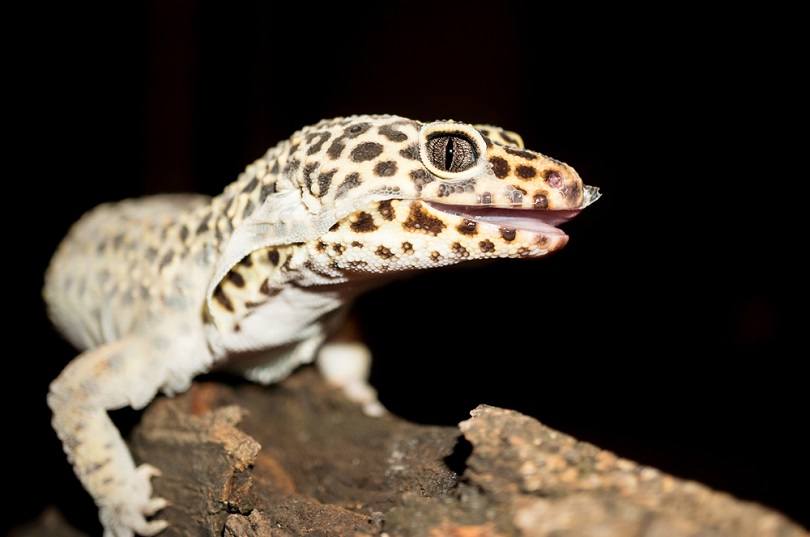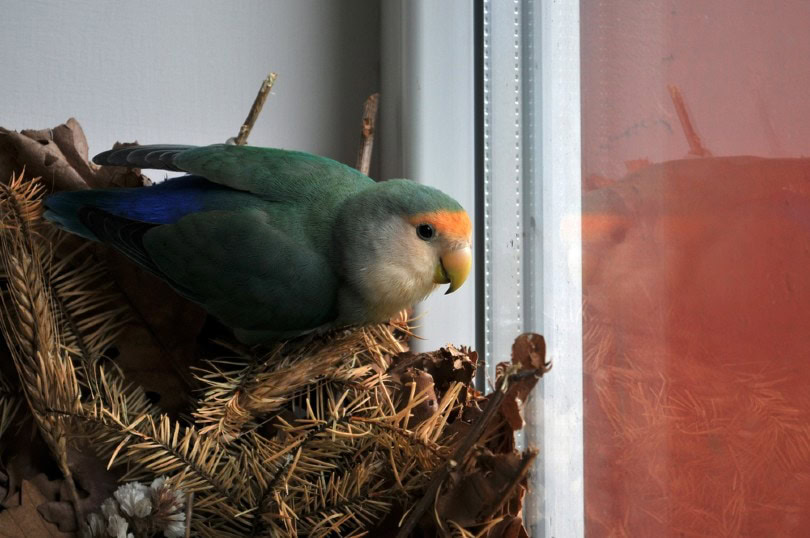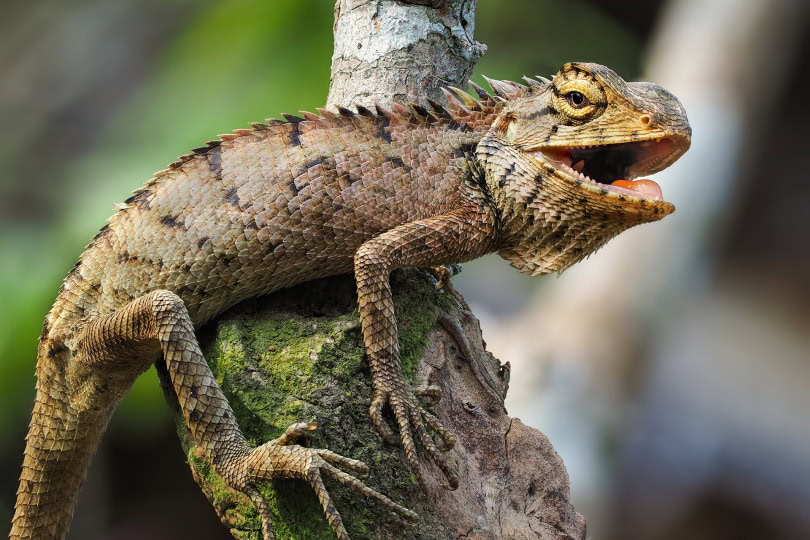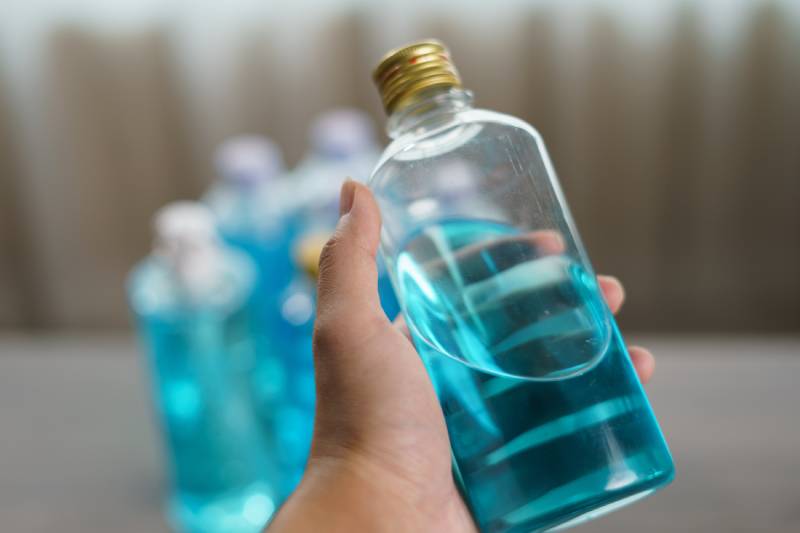VET APPROVED

The information is current and up-to-date in accordance with the latest veterinarian research.
Learn more »Click to Skip Ahead
Yellow, white, and with black spots, leopard geckos are ground-dwelling lizards that are nocturnal, docile, and considered easy to tame. They can make good pets because they require less intensive care compared to cats and dogs and are interesting creatures to watch. Leopard geckos also shed their skin regularly.
While it is an interesting characteristic, shedding time can prove to be one of the more stressful experiences for gecko owners if things do not go according to plan. Here is a guide on gecko shedding patterns, what you can do to help, and other details about shedding.

How Often Should a Leopard Gecko Shed?
These little lizards are constantly growing. When they outgrow their current skin, they will shed it so it can be replaced with better-fitting skin. While most sheds will complete easily and without physiological stress for your gecko, problems can occur. These are more common in reptiles that have other pre-existing conditions and illnesses.
The amount of time between shed cycles varies according to factors like the age and physical condition of the gecko. Their reproductive status also plays a part. Generally, your gecko will shed roughly every 4 to 8 weeks. Young leopards will shed every week or two because they grow at a much faster rate. Adults will shed every month or two.
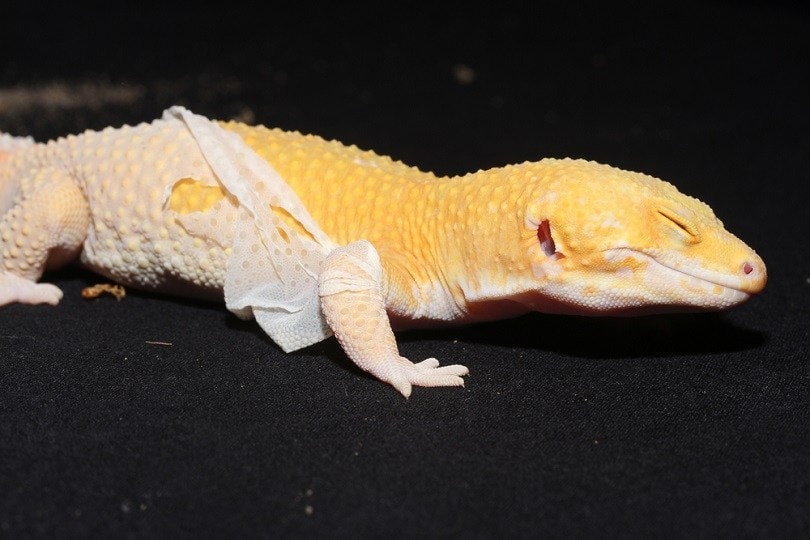
How Long Does It Take for a Leopard Gecko to Finish Shedding?
Whether you have an infant or an adult gecko, the shedding process should be complete within 24 to 48 hours. By this time, the gecko should have fully shed their old skin. You may not notice this, however, because more often than not, they will eat the shed skin.
Should I Feed My Leopard Gecko While They’re Shedding?
Geckos typically eat every 2–4 days, and they may prepare themselves for shedding beforehand. Therefore, they do not usually need to eat while shedding, and it is common for this species to eat less or avoid eating altogether during the shedding process. It’s best to remove any leftover food from your gecko’s enclosure while they’re shedding. Live food can irritate their sensitive skin, while other food can go off and start to smell or stress your leopard out.
Should I Handle My Leopard Gecko When They’re Shedding?
While shedding, your pet may become irritable and grumpy. Even the most placid geckos can become a little aggressive when shedding, quite simply because it’s a time when they feel vulnerable.
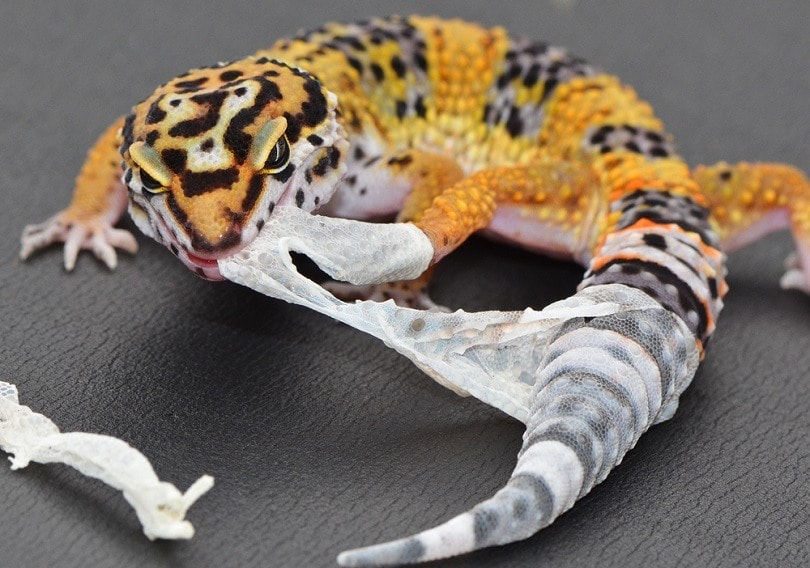
At the very least, they will be skittish, and it is not uncommon for shedding animals to want to be left alone. Give your leopard gecko some space for a few days during and immediately after the shedding process. They should be back to normal 2–3 days after shedding has been completed.
Can Leopard Geckos Die From Shedding?
A healthy leopard gecko should not suffer any ill effects of shedding, but shedding problems can be common if your setup is not optimal. A lack of humidity and hydration are among the most common causes of shedding problems, and these can include the skin getting caught around a particular area as the body underneath grows.
The most common areas where this happens are the toes. If the skin is left too long, it can cause circulation problems and may even lead to a toe falling off. The skin around the face is another problem area and can lead to feeding and hydration issues.
If the skin has not been shed completely after 2–3 days, you may have to take action to assist. Do not pull the skin because this can cause lasting injury. Put your gecko in around ½ inch of lukewarm water, and leave them for about 1 minute. This can help remove the skin from the belly and feet. Leopard geckos are terrible at swimming, so the water dish in which you place them should be easy for them to climb out of if they feel uncomfortable. The water should never be at a level higher than their shoulders.
Put damp towels in a warm container to create a humid environment similar to that of a sauna. Place your gecko in the container, ensuring that it is properly ventilated, and leave them there for about 30 minutes. You can also use a wet cotton ball to gently rub excess skin away.

Why Is My Leopard Gecko Constantly Shedding?
Since geckos can shed every 4 weeks even as adults and the whole process takes a couple of days, it can feel like your gecko is constantly shedding when they are simply following a natural shedding cycle.
That said, you should keep track of how often your leopard is shedding. Even if it is every couple of weeks, this could be perfectly natural if yours is growing quickly, something that can occur if they’re eating more than usual.

Tips to Help a Leopard Gecko Shed
In most cases, a leopard gecko should shed perfectly well on their own and without any assistance, especially if you make sure their cage and setup are good. In particular, ensure that your gecko is well-hydrated and that their cage has the right humidity and moisture levels.
Check that your gecko has a moist hide. It will provide warmth, and the moisture will offer the humidity that your gecko needs. Misting the terrarium when it is shedding time can also help increase the humidity, which works in a similar way to steaming wallpaper for easier removal.
Also, ensure that your little lizard has a textured surface that they can rub against to help remove loose skin. In the wild, this would likely be a rock. If all the surfaces in your terrarium are too smooth, this could be preventing them from properly shedding.
- You might also be interested in: Can You Put Two Leopard Geckos Together?

Conclusion
Leopard geckos shed when they get too big for their skin. While it can pass without incident and often does, this monthly occurrence can become problematic if your terrarium is not set up properly. Ensure decent moisture and humidity levels, and offer somewhere for your pet to rub against.
If all else fails, consider bathing your gecko or even making a sauna to help encourage the best shedding conditions. Don’t worry if your leopard eats its shed skin. This is perfectly natural, if a little gross!
Featured image credit: H. Evan Miller, Shutterstock
